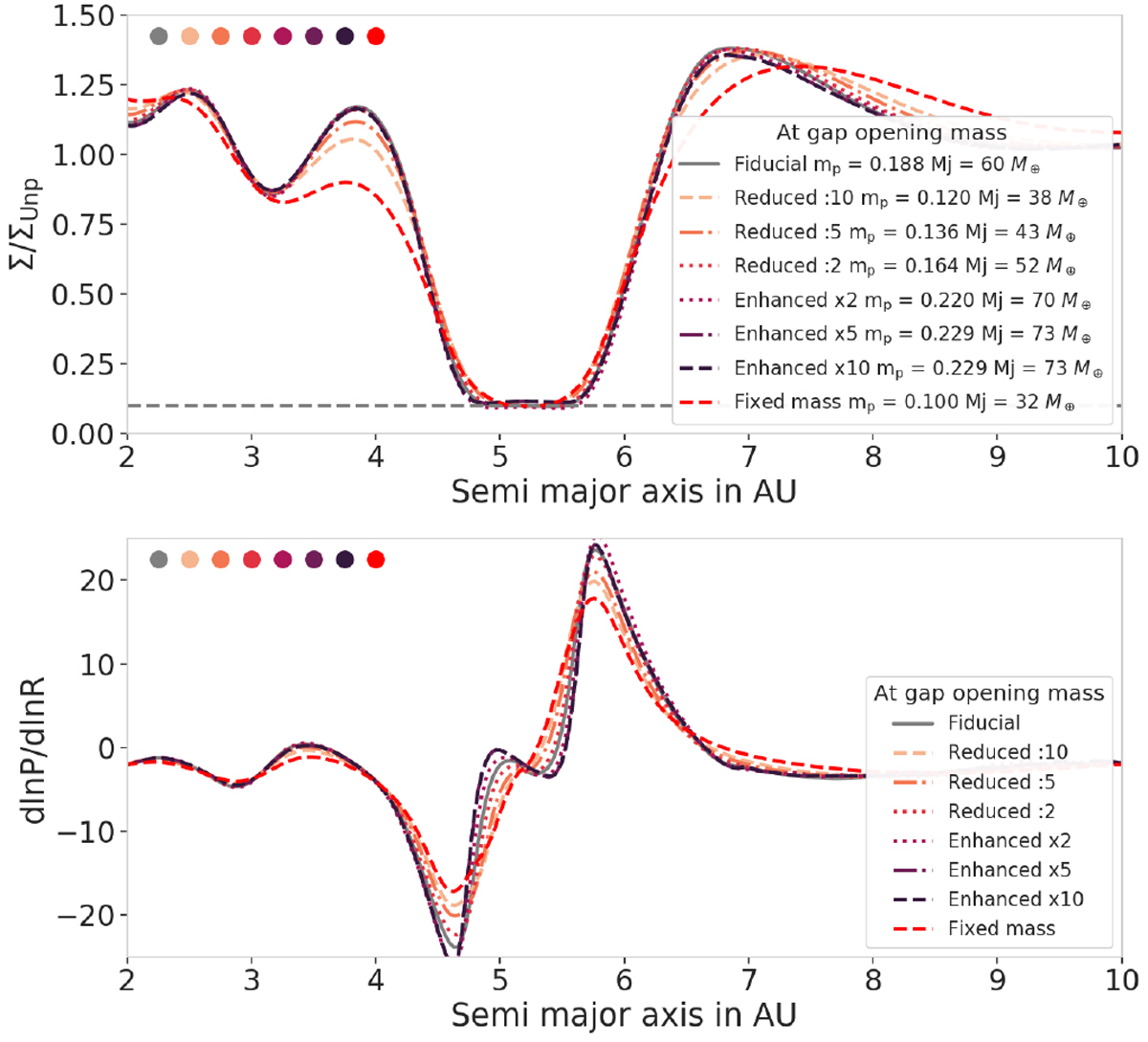Fig. 19

Influence of gas accretion on the disc structure at the gap-opening mass for α = 10−4 and h = 0.05. Top: perturbed surface density profiles at gap-opening mass in the seven different gas accretion cases and in the fixed-mass case. For these disc parameters, the gap-opening mass is highly influenced by gas accretion, making the planet open a gap at a higher mass when the planetary gas accretion rate is enhanced. However, the resulting gap shape at gap-openingmass is independent on the gas accretion rate. The accreting planets show some differences when compared with the planet of a fixed mass. Bottom: pressure bumps at the gap-opening mass in the seven gas accretion cases and in the fixed-mass case. As the gap shapes are similar, the difference in the created pressure bumps is too small to be observable.
Current usage metrics show cumulative count of Article Views (full-text article views including HTML views, PDF and ePub downloads, according to the available data) and Abstracts Views on Vision4Press platform.
Data correspond to usage on the plateform after 2015. The current usage metrics is available 48-96 hours after online publication and is updated daily on week days.
Initial download of the metrics may take a while.


